Attempt at 7492p build. 50wx2,version Complete Noob... Please help!
So I'm trying to build my own portable, rechargeable bluetooth speaker. I'm looking to build something that sounds decent on a 4'' Speaker, for a budget of under $75 and already have an enclosure for the speaker.
I have posted my current setup below as a very basic wiring diagram. The issue I'm having is a power on/off thump from the amp. When I have power from the USB wall plug, it does not cause issue, but when run just on battery alone, the thump causes the amp to turn off. Is it the board or do I have something incorrect?
So I'm trying to build my own portable, rechargeable bluetooth speaker. I'm looking to build something that sounds decent on a 4'' Speaker, for a budget of under $75 and already have an enclosure for the speaker.
I have posted my current setup below as a very basic wiring diagram. The issue I'm having is a power on/off thump from the amp. When I have power from the USB wall plug, it does not cause issue, but when run just on battery alone, the thump causes the amp to turn off. Is it the board or do I have something incorrect?
An externally hosted image should be here but it was not working when we last tested it.
Last edited:
My suggestion
I honestly do not understand your schematics. And, I can't relate your description to your schematics.
I have made a schematics of my own with the following comments:
* You need three TP4056 charger modules, one for each 3.7V battery.
* You need one USB adapter for each TP4056 module AND the USB adapters need to be of the type with a transformer, because the outputs are stacked (series connected) and need to be “floating”.
* The 3 diodes are of a 5A type. They protect the batteries against reverse polarity which is an issue with stacked batteries.
* I am not familiar with the expression “ON/OFF thumb”. I assume it to be an ordinary switch.
* I doubt the 220uF on the SUNKEE module input is sufficient to remove the ripple from the batteries. I suggest to add 1000uF/35V of a low ESR type.
* I am quite certain the 220uF on the SUNKEE module and the power decoupling on the TDA7492 board is insufficient for a boost converter output feeding an audio amplifier. I suggest to add 4700uF/35V.
I honestly do not understand your schematics. And, I can't relate your description to your schematics.
I have made a schematics of my own with the following comments:
* You need three TP4056 charger modules, one for each 3.7V battery.
* You need one USB adapter for each TP4056 module AND the USB adapters need to be of the type with a transformer, because the outputs are stacked (series connected) and need to be “floating”.
* The 3 diodes are of a 5A type. They protect the batteries against reverse polarity which is an issue with stacked batteries.
* I am not familiar with the expression “ON/OFF thumb”. I assume it to be an ordinary switch.
* I doubt the 220uF on the SUNKEE module input is sufficient to remove the ripple from the batteries. I suggest to add 1000uF/35V of a low ESR type.
* I am quite certain the 220uF on the SUNKEE module and the power decoupling on the TDA7492 board is insufficient for a boost converter output feeding an audio amplifier. I suggest to add 4700uF/35V.
Attachments
Last edited:
I appreciate the response and schematic. As stated I'm super new to any of this so fumbling through as I learn. Looking at your schematic, I would need to individually recharge each battery? Is there any way to use a single charging port to recharge all 3 batteries???
Thank you again for the help
Thank you again for the help
Be aware! There seems to be a current mismatch with the components you mention. The Sunpeek converter can deliver 2.5A maximum at the output. With two speakers, that leaves good 1A for each channel. 1A in an 8 Ohm speaker is 8W, in a 4 Ohm speaker only 4W. The supply voltage for 8W in 8 Ohm is 12V, for 4 Ohm only 6V. The batteries without conversion leave around 11V. Thus, you better remove the Sunpeek LM2577 converter and use the batteries directly for supply of the amplifier.
Next, how much current can you draw from your 3.7V/5000mAh batteries? 8 Ohm speakers will demand 2A, 4 Ohm speakers 4A. The batteries you intend to use sound like better ones from a smartphone. Can they supply 4A and at the same time maintain 3.7V?
You can charge each battery individually (using only one charger) without loading of any of the three batteries. You should then be sure to charge all three batteries to full before using the amplifier. But, you then have to monitor during operation when the first battery runs "dry" at a voltage around 3.2V AND STOP THE AMPLIFIER.
Next, how much current can you draw from your 3.7V/5000mAh batteries? 8 Ohm speakers will demand 2A, 4 Ohm speakers 4A. The batteries you intend to use sound like better ones from a smartphone. Can they supply 4A and at the same time maintain 3.7V?
You can charge each battery individually (using only one charger) without loading of any of the three batteries. You should then be sure to charge all three batteries to full before using the amplifier. But, you then have to monitor during operation when the first battery runs "dry" at a voltage around 3.2V AND STOP THE AMPLIFIER.
Pavulon, please be aware that there are serious safety issues related to using some types of lithium battery chemistries.<snip>I would need to individually recharge each battery? Is there any way to use a single charging port to recharge all 3 batteries???
In a nutshell, lithium-polymer, and lithium-ion (which is basically lithium polymer rolled up and stuffed into a metal can) have an unpleasant tendency to burst into high-temperature flames if anything goes wrong with charging or discharging them.
"Anything goes wrong" includes overcharging by even a very slight amount, over discharging, or physical damage (impacts, etc.)
It's particularly dangerous to attempt to charge multiple lipo or li-ion cells in series. The problem is that the three cells will never have exactly the same capacity, so one will charge up sooner than the other two. Then this one will overcharge, even though its two companions are not yet fully charged.
And if this one weak cell is overcharged by more than a few tens of millivolts, metallic lithium will begin to plate out of the electrolyte and onto the electrodes. The next thing to happen is high-temperature flames, along with the emission of large amounts of toxic smoke. We're talking flames hot enough to destroy cars, garages, and sometimes homes: Google "lipo fire" and look at some of the images to see for yourself.
But we know today's crop of cordless tools use multi-cell packs, and manage to charge them up without any bursting into flames (most of the time, at any rate.) So how do they do this?
The answer is that these chargers include circuitry that monitors the voltage across each and every individual cell in the pack, during the entire charging process.
Usually, the monitoring circuitry also includes balancing circuitry, which routes extra charging current around any cell that is already fully charged, preventing it from overcharging.
So: never, ever, under any circumstances, attempt to charge multiple series lipo or li-ion cells, without appropriate cell monitoring and balancing circuitry, and a charger that has been designed specifically for that task.
Ignore this advice at your peril. I personally knew three RC pilots who destroyed their own vehicles in large, stinky car-fires, caused by charging lipo packs inside their cars.
Using one charger per cell may or may not work: it depends on the charger. The (-) end of each charger is at a different voltage when used in this way, and this only works if the charger does not internally ground the (-) lead to earth via a 3-wire mains lead. If the charger is internally grounded, you will short out the first lipo / li-ion cell in the chain via the second lipo charger in the chain. Shorting out lipo and li-ion cells is one way to cause them to burst into flame.
Really, unless you're an expert, just don't use lipo or li-ion batteries in DIY electronic circuitry. It's just not worth the risk to your home, property, pets, and other family members.
It's worth a mention that even commercial products with carefully engineered li-ion and lipo batteries and chargers have had a number of problems with bursting into flames. This has happened to a number of brands of phones and Android tablets in the last few years alone - just do an Internet search if you want more details.
I'm going to attach a few links and images about lipo fires to this post, for your further reading.
Links:
1) Tom's R/C Fire Pics
2) LIPO Fire - WARNING! - Page 1
3) Lipo fire took my house and everything I own - RC Groups
4) Toy battery blamed for house fire - NZ Herald
5) Charging Drone Battery causes house fire on ABC News this AM | DJI Mavic Drone Forum
6) https://www.helifreak.com/showthread.php?t=291770
7) https://endless-sphere.com/forums/viewtopic.php?f=14&t=29256
-Gnobuddy
Attachments
Instead of fearmongering, a possibly more constructive answer might've been to indicate some 3S protection and/or balancing circuits. Just my two cents...
That being said, haven't enough iPhones and Note 7's blown up and/or caught fire? And those only have SINGLE-cell batteries
That being said, haven't enough iPhones and Note 7's blown up and/or caught fire? And those only have SINGLE-cell batteries
To me, fearmongering is "You will die if you use lipos!" Note that this is not what I actually wrote.Instead of fearmongering,
What I tried to do was provide links to a number of stories and images that show the all too real dangers of lithium batteries. Pavulon can then make up his mind whether or not he wants to take that risk.
My thought was that if Pavulon does decide to take the risk of using lipo/li-ion batteries, he can find that information very easily for himself, now that he knows the need for balancing and protection circuits.a possibly more constructive answer might've been to indicate some 3S protection and/or balancing circuits.
I don't know about other countries, but in the USA, I've been told that you have legal liability if you give someone else advice that subsequently causes them injury or property loss. If someone recommended a protection/balancer circuit to Pavulon, and Pavulon subsequently had his house burn down despite use of that protection circuit, he could then sue the person who originally gave the advice. A jury might then find that person liable, and issue a judgment that could bankrupt that unfortunate person.
This is the main reason why I've stopped giving out safety advice on issues like this. I'm assuming one is less likely to be sued for issuing warnings that keep people away from potential danger.
Incidentally, one thing I did not mention earlier is that I flew RC planes for a number of years myself. When lipo packs arrived, I educated myself about them, and used them with a number of stringent safety measures in place (for example, I only transported them surrounded by small sandbags and placed inside a small fire-proof safe, and only charged them outdoors, well away from all flammable materials.)
I witnessed a number of lipo fires during my RC flying days, but ever experienced one myself - though my safety precautions caught several bad packs before they had the chance to burst into flames. I then used approved disposal methods to get rid of the dangerous cells before they caught fire.
My less careful friends were not so lucky. Two had their personal vehicles totaled by car fires. The third was uninsured, and kept driving his old Toyota pickup after the fire. It now had the passenger seat, half the dashboard, and the entire headliner burnt to a stinking, sticky black mess.
Perhaps I was just lucky. Perhaps my technical background, and the fact that I took the dangers of lipo fire very seriously, kept me out of trouble. At any rate, it became extremely clear to me that DIY lipo devices were not a good choice for most people.
My feeling on this is that it is better to make the dangers extremely clear, and then let people decide for themselves. At least they won't make the wrong decision out of ignorance.
Indeed they have! As you have just pointed out, single cells can be dangerous, multi-cell packs even more so, and improper charging is not the only cause of these packs bursting into flames!That being said, haven't enough iPhones and Note 7's blown up and/or caught fire? And those only have SINGLE-cell batteries
Consumer electronics is one thing. The world of commercial aviation is far more safety-conscious. Stringent testing and certification requirements are in place on every single component in an aircraft, to ensure safety for the passengers and crew. Despite all this, even Boeing had some very serious problems with lithium batteries:
1) How Lithium Ion Batteries Grounded the Dreamliner - Scientific American
2) Boeing 787 Dreamliner battery problems - Wikipedia
3) Calls for lithium battery review after Boeing Dreamliner fire at Heathrow | Business | The Guardian
-Gnobuddy
Last edited:
Thanks for the info, I'm currently looking at having a 4" 2-way speaker @4 ohms,
20w or so rms, rechargeable li-on. I have the enclosure piece figured out.
To me, the dayton KAB-250a board with optional KAB BE 18650 board looks perfect for this simple build. From what I could tell, purchasing a switch and a USB break out board for charging plug would be the 2 additions I would need.
Am I looking at this correctly? Is there a better setup for the price that I'm overlooking???
20w or so rms, rechargeable li-on. I have the enclosure piece figured out.
To me, the dayton KAB-250a board with optional KAB BE 18650 board looks perfect for this simple build. From what I could tell, purchasing a switch and a USB break out board for charging plug would be the 2 additions I would need.
Am I looking at this correctly? Is there a better setup for the price that I'm overlooking???
The optional KAB BE 18650 board looks like a step in the right direction, since it includes overcharge protection and cell balancing circuitry.looking at having a 4" 2-way speaker @4 ohms, 20w or so rms, rechargeable li-on.
<snip>
To me, the dayton KAB-250a board with optional KAB BE 18650 board looks perfect for this simple build.
The actual lithium cells are not included, and I don't see them advertised on Parts Express. Have you found a source for good quality 18650 cells?
One more thing. While the KAB-250A amplifier board is advertised as "2x50W", Parts Express has forgotten to let you know that the actual power delivered to the speakers depends on both the battery voltage, and the speaker impedance.
So let's talk about the actual power you can expect.
All the li-ion cells I know about are fully charged at 4.2 volts per cell, which immediately drops to about 4 volts once charging stops.
The voltage from the cells drops further under load, and also drops a bit as the cells discharge from full towards empty.
For these reasons, you may see li-ion cells advertised as "3.7V" rather than 4.2V. The 3.7 V number is some sort of average voltage allowing for these various voltage-lowering effects.
So: with three cells in series, you can expect about 12 volts from a freshly charged pack, dropping to maybe 10.5 volts when the cells are nearly empty.
When the amplifier is operating, some voltage will be lost in the MOSFETs that drive the loudspeaker. The exact voltage lost will depend on many details, but a reasonable estimate is that at least 1 volt, more likely 1.5 volts, will be lost in each of the two MOSFETS (one at each end of the speaker.)
If we use the more conservative 1.5V estimate, then, with a fully charged battery pack, this leaves (12-3), or 9 volts remaining.
For this type of amplifier (which operates in what is called bridge mode), you can then calculate the maximum power that the amplifier can deliver to the speaker using the formula:
Max power (RMS watts) = (9 x 9) / (2 x 4)
(Where 9 is the peak voltage, 4 is the speaker resistance, and the "2" comes from converting peak voltage squared to RMS voltage squared.)
If you plug those numbers into a calculator, we find that your amplifier, running on 3 1860 li-ion cells in series, should be able to deliver about 10 watts RMS, maximum, into a 4 ohm speaker.
(If you turn up the volume beyond this point, more power will be delivered to the speaker, but it will be more and more heavily distorted.)
Let's repeat our calculation assuming only 1V is lost in each output MOSFET. Now you have 10 volts to play with instead of 9, so max output power will be:
Max power (RMS watts) = (10 x 10) / (2 x 4)
This works out to 12.5 watts RMS, maximum.
Incidentally, the manufacturers datasheet for the Texas Instruments class-D chip on this board claims that the board can deliver 15 watts to a 4 ohm load when powered by a 12 volt power supply at 1% distortion. This will be with a perfectly regulated 12-volt power supply; you won't get that performance from 3 li-ion cells (voltage drops under load, and also as the cells lose charge.)
By the way, because of the way the human ear/brain processes sound, there will be little audible difference between 10 W and 15 W - they will sound almost identically loud.
Also, there is nothing wrong with "only" 10 - 12 watts. This may very well be more than loud enough for you.
But I just want you to know the facts - that "50 W" board will actually only deliver about 10 W, or one-fifth of the advertised power, when used the way you intend to use it.
Truth in advertising does not hold for power amplifier boards.
-Gnobuddy
- Status
- This old topic is closed. If you want to reopen this topic, contact a moderator using the "Report Post" button.
- Home
- Amplifiers
- Class D
- Complete Noob... Please help!
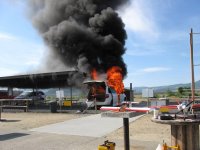
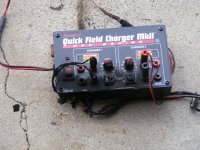
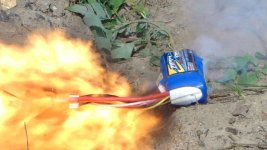
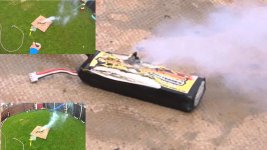

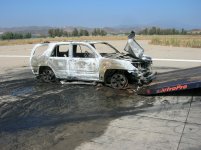
 @Pavulpn - It's against the Forum Rules to start multiple threads on the same/similar topic, as a results, your other threads have been removed.
@Pavulpn - It's against the Forum Rules to start multiple threads on the same/similar topic, as a results, your other threads have been removed.